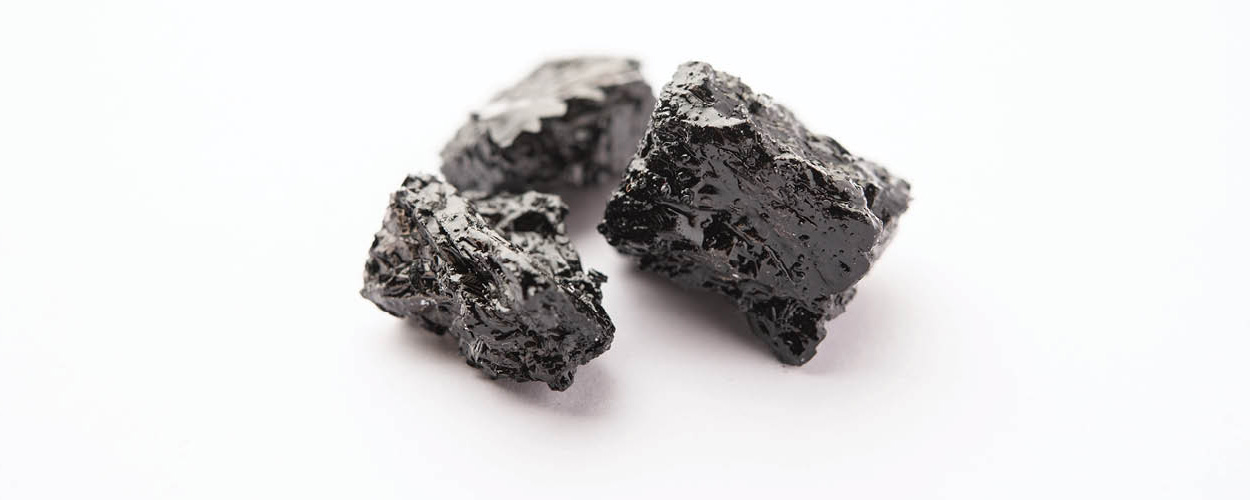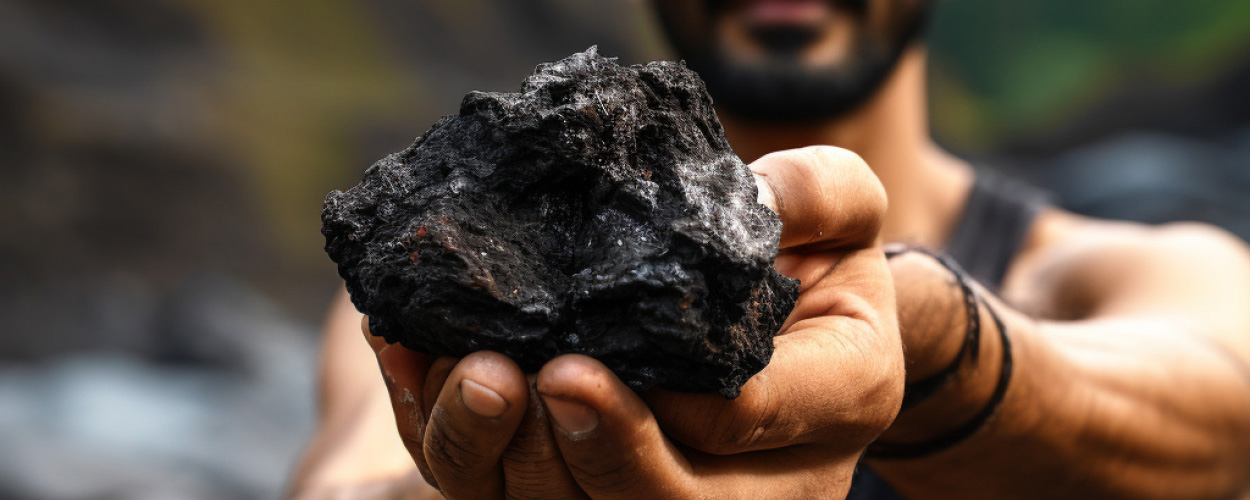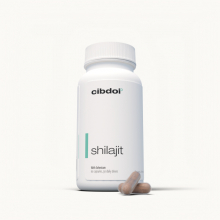Does Shilajit Have Side Effects?
Published:
 Does Shilajit Have Side Effects? What You Need to Know
Does Shilajit Have Side Effects? What You Need to Know
Shilajit is a natural substance that has been used in traditional Indian medicine for centuries. Known as the "destroyer of weakness," it offers many touted health benefits.
Contents:
- What is Shilajit?
- Purported Benefits of Shilajit
- Is There Scientific Evidence on Shilajit Benefits?
- What’s the Verdict on Shilajit?
- What Exactly is Shilajit?
- How Does Shilajit Work?
- What Do People Take Shilajit For?
- What’s the Recommended Shilajit Dosage?
- How Soon Can I Expect Benefits from Shilajit?
- Is it Safe to Take Shilajit Long Term?
- Who Should Not Take Shilajit?
- What Should I Look for in a Quality Shilajit?
- Summary
But a common question from those considering taking shilajit is - does shilajit have side effects?
In this post, we’ll explore what shilajit is, its proposed benefits, safety and potential side effects to be aware of.
What is Shilajit?
Shilajit is a blackish-brown natural mineral complex that oozes from high mountain rocks during hot weather. It is found mainly in the Himalayas, Tibet mountains, Altai Mountains, Caucasus Mountains and Gilgit Baltistan.
It’s composed of humus and organic plant material that has been compressed by layers of rock over centuries.
Ayurveda considers shilajit a “rejuvenator” and “adaptogen” - helping balance body processes to enhance health and fight the effects of aging.
Purported Benefits of Shilajit
Shilajit has been used in various traditional medicine systems for benefits like:
- Increased energy and stamina
- Anti-aging effects
- Enhanced brain function
- Elevated immunity
- Faster injury recovery
- Improved vitality and strength
- Antioxidant properties to fight cell damage
- Better digestion
And much more. But are these claims backed by science?
Is There Scientific Evidence on Shilajit Benefits?
Modern research on shilajit remains in early stages but initial studies show promise:
- Several studies note the significant antioxidant activity of shilajit to protect body cells from damage.
- There’s evidence for shilajit anti-inflammatory, antiviral and anticancer properties.
- Some findings suggest shilajit may lower cortisol and help the body adapt to stress.
- A few studies point to potential shilajit cognitive benefits - from enhanced learning and memory to protection against Alzheimer’s disease.
- Some preliminary studies indicate it may improve heart health and help alleviate altitude sickness.
While early research is intriguing, more robust data from larger human trials is still needed.

Is Shilajit Safe? Side Effects and Safety Concerns
Most people can take shilajit without problems but does shilajit have side effects? A few safety considerations are worth noting:
1. Purification
Raw shilajit as it seeps out of rock is often contaminated with heavy metals, plant particles, free radicals and other elements that make it unsafe for consumption.
Purification and filtration processes are crucial to remove potentially hazardous compounds and pathogens before it’s ready to ingest. So purity and processing practices are vital.
2. Imbalanced Formulation
Shilajit contains over 80 different minerals and compounds. But the key player is fulvic acid - it carries the main health benefits. Many shilajit supplements don’t list the fulvic acid levels so it’s hard to confirm if they’re properly balanced.
3. High Iron
Shilajit has an exceptionally high iron content. While important for many body functions, excess iron can cause GI upset, liver damage, low blood pressure and other problems. Those with hemochromatosis should avoid shilajit.
4. Interactions
Shilajit may interact with medications including anticoagulants, blood pressure meds, immunosuppressants and certain psychiatric drugs. Check with your doctor before taking shilajit if you take any prescription medications or supplements.
5. Too High Dosage
Taking more shilajit than is recommended can elevate uric acid levels which may precipitate gout. Start with low doses of 20-50mg per day before gradually increasing over time.
6. Sensitivity
A very small number of people report allergic reactions and stomach upset with shilajit. Discontinue use if any hypersensitivity develops.
So in summary - when shilajit is properly purified, balanced and taken as directed - it seems relatively safe for most people. Yet those with certain conditions or on medication should consult their physician before use.
What’s the Verdict on Shilajit?
Shilajit has a long history of use and shows early promise from some emerging studies. But data on safety and efficacy is still limited.
If considering trying shilajit, the utmost importance lies in selecting a purified, high-quality product from a reputable source. Ensure it has fulvic acid levels listed and is balanced.
Always start with low doses and increase slowly. Watch for any side effects and stop immediately if reactions develop.
Combining shilajit with a balanced diet and active lifestyle may further any health gains. But check with your healthcare provider before taking to ensure suitability.
The merits of shilajit look intriguing but more evidence is required to confirm benefits. Using high-quality supplements responsibly may offer health support - but some safety considerations apply.
Have you tried taking shilajit? Did you notice any benefits or side effects? We welcome your thoughts below!
Frequently Asked Questions on Shilajit
Below we answer some common questions on shilajit - what it is, how it works, its benefits, safety profile and more.
What Exactly is Shilajit?
Shilajit is a thick, tar-like substance that oozes from between rocks in several mountain ranges across Asia, especially the Himalayas. It’s composed of organic plant matter and minerals that have been compressed by layers of rock over time. Ayurveda considers shilajit a rejuvenating adaptogen.
How Does Shilajit Work?
Shilajit contains over 80 minerals and compounds with the primary active ingredient being fulvic acid. Fulvic acid is thought to carry minerals and other key nutrients to cells throughout the body to replenish, reenergize and revitalize at a deep cellular level.
What Do People Take Shilajit For?
There are many traditional uses of shilajit. People primarily take it today to boost energy, slow aging, enhance immunity, improve brain and heart health, speed injury recovery and elevate male reproductive health.
What’s the Recommended Shilajit Dosage?
Due to variances in shilajit quality and formulation, there’s no universal dosage guideline. But many experts suggest starting with 20-50mg of shilajit per day to assess tolerance, then slowly increasing to the recommended dosage by the manufacturer. Never exceed dosage on a product’s label.
How Soon Can I Expect Benefits from Shilajit?
As shilajit must replenish nutrients at a cellular level, most supplements advise regular use for at least 3-6 months to feel the full effects. Be patient as benefits accrue over time. Some users report subtle gains in energy, cognition or strength within several weeks.
Is it Safe to Take Shilajit Long Term?
There are no known adverse effects with prolonged shilajit ingestion reported in traditional texts or modern research when used as directed. However there are very few long term safety studies. It’s best to cycle on and off shilajit, for example taking 3-6 months consistently followed by a 1 month break.
Who Should Not Take Shilajit?
Those with gout, hemochromatosis (iron overload disorder) and Wilson’s disease should avoid shilajit due to mineral/metal content. Check with your doctor before use if on medication or if you have bleeding disorders, low blood pressure, liver issues or uric acid sensitivity as interactions are possible.
What Should I Look for in a Quality Shilajit?
The key sign of an effective shilajit complex is its level of fulvic acid - it should range from 20-60%. Also ensure the product is purified (with tests to confirm absence of toxins like heavy metals) and processed to retain other beneficial compounds like dibenzo-alpha-pyrones.
Summary
Shilajit is a tar-like, mineral-rich substance used in Ayurvedic medicine to boost energy, slow aging, enhance male health, and provide other benefits. It oozes from mountain rocks during hot weather in mountain ranges like the Himalayas. Composed of humus and ancient plant matter, shilajit contains over 80 minerals and compounds, with the key active ingredient being fulvic acid.
Fulvic acid carries key nutrients and minerals to replenish cells throughout the body. Shilajit has many purported benefits backed by some preliminary research, like enhanced cognition, anti-inflammatory, and antioxidant properties. Yet high-quality human trials are still lacking.
Most people can take purified, high-quality shilajit safely but some side effects are possible in sensitive groups, especially with long term use or high doses. Key is finding properly purified and formulated shilajit complex containing 20-60% fulvic acid, and avoiding contamination with toxins like heavy metals. Those on medication or with certain health conditions should consult their doctor before using shilajit supplements.














